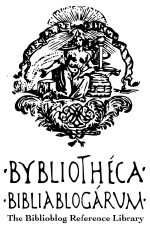
In early March 2011 the media reported upon an amazing discovery: Twenty to seventy codices, cast in lead, that potentially held untold secrets about early Christianity. However, from the very beginning something about the discovery appeared odd. Over the course of seven months, an informal group of Bibliobloggers (vetted scholars and students who blog about Biblical Studies) took the time to form a private email list to investigate and discuss the objects and the people behind them. This page serves as a place to share their collective insights.
In the years since, the Codices occasionally re-surface in the media with new stories that rehash old news, claims of "authentication," or "new testing" that – under scrunity – comes to the same old conclusions. All in all, not much has changed:
Textual Evidences...
What of the actual "texts" themselves? If they are truly ancient, then we would not see these problems.
Repeated Stamped Text

One of the strongest evidences of forgery is the consistent use of repeated, identical "babble-text," arranged in such a way to make it look as if the actual blocks of letters are larger, unique, and have "more to say." With sand/clay casting this is easily done by making a master impression stamp and impressing it multiple times into the casting medium, or by using the same hammered mold in a staggered pattern.
They occur in the following specimens (click below):
|
Menorah Palm Codex |
Christ Head Codex |
"Membership Card" |
|||
|
Tall Palm Codex |
Corroded Leaf |
||||










Copied Inscriptions
One of the codices contains a Greek inscription and David Elkington consulted Dr. Peter Thonemann to decipher it. Thonemann discovered that it was a poorly copied piece of text from a 2nd century bi-lingual tombstone.
|
The Copper Codex |
Visualization based off the work of Dan McClellan and Steve Caruso.

Coin Impressions
A number of impressions and motifs were found taken from coins from different eras, as well as several modern fakes. Click below:
|
Tourist Trinket (modern) |
Alexander the Great (As Heracles) (~350 BC) |
Herodian 8-Prutah Piece (~40 BC) |
Ambiblius Prutah (~10 AD) |








Special thanks to Robert Deutsch
Identical Motifs
A number of the motifs and entire sections on different plates are identical, pressed from the same mold. However, there is no care to preserve context and lettering is cut off and half-impressed. Click below:
|
Two Menorah Plates |
Another Two Menorah Plates |




Contextual Mockups
Scholars who are familiar with the iconography found on the Codices are able to see where different styles and eras of writing are interspersed with numismatic (i.e. coin) stamps. The illustrations in this section are designed to be metaphors that the average person can understand by incorporating familiar elements taken out of context in a similar manner.
|
Pocket Change |

Misinformation & Censorship...
A good deal of misinformation about the Codices has been circulated mistakenly by the press and purposefully by some of its supporters where critical information has been suppressed.
Misattributed Quotes
During the initial media blitz, the Press was not very careful checking their quotes for accuracy. The following are clarifications given by scholars who were quoted as giving strong support for the Codices' authenticity:
Censorship

A Facebook page was quietly set up in support of the Jordan Codices. After a small exchange between several individuals critical of their authenticity and the administrator of the group, any comments that were ambiguously against the authenticity of the Codices were deleted and their owners banned from participation.
Manipulated Reports
One of the metallurical reports posted to the Facebook group was found to have been altered by the administrator to remove unfavorable comments made by the researcher, Dr. Peter Northover, who indicated that the corrosion was young. When asked to clarify the report, the Dr. Northover explained that the codices were not constructed in the past few years or possibly decades, but that he could not completely rule out a date within 100 years. Additionally, the owner of the copyrights to the report, Robert Feather who commissioned them, did not give permission to the Facebook group's administrator to post them.
2016 Reports of "Authentication"
A number of news articles hit the press in time for Christmas with claims that the Codices were "authenticated." New tests were carried out by the Ion Beam Centre that simply demonstrate – once more – that the Codices are made of Roman lead: A very common and readily available material. Links to articles will be posted here soon.
The Participants:
This website is based off of the work of the following individuals:
Mark Goodacre, Ph.D. | Dorothy Lobel King, Ph.D. | Daniel O. McClellan
David Meadows | James McGrath, Ph.D. | Thomas Verenna
Joel Watts | Jim West, Th.D.

Wait... wasn't this supposed to be the official Jordan Lead Codices page?
Originally it was intended to be.
We assume that either a) it was never registered in the first place, or b) that the Elkingtons stopped paying registration fees as it was returned to the registry. It was purchased through conventional channels without subterfuge or sabotage (despite claims to the contrary).
Are you some kind of conspiracy?
"When you accuse a group of individuals of conspiring against you, do not be surprised if they band together for their common defense." - Unknown Wikipedia Author
